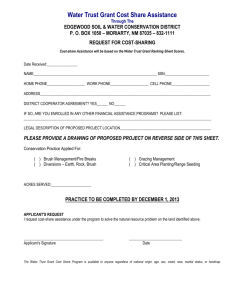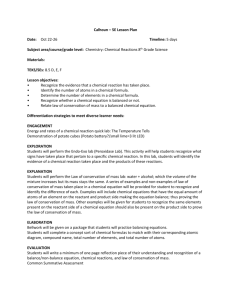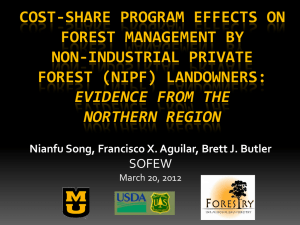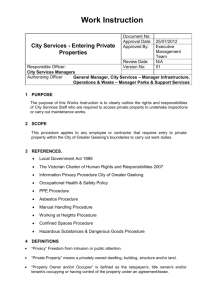Checklist for processing contract - Minnesota Board of Water and
advertisement
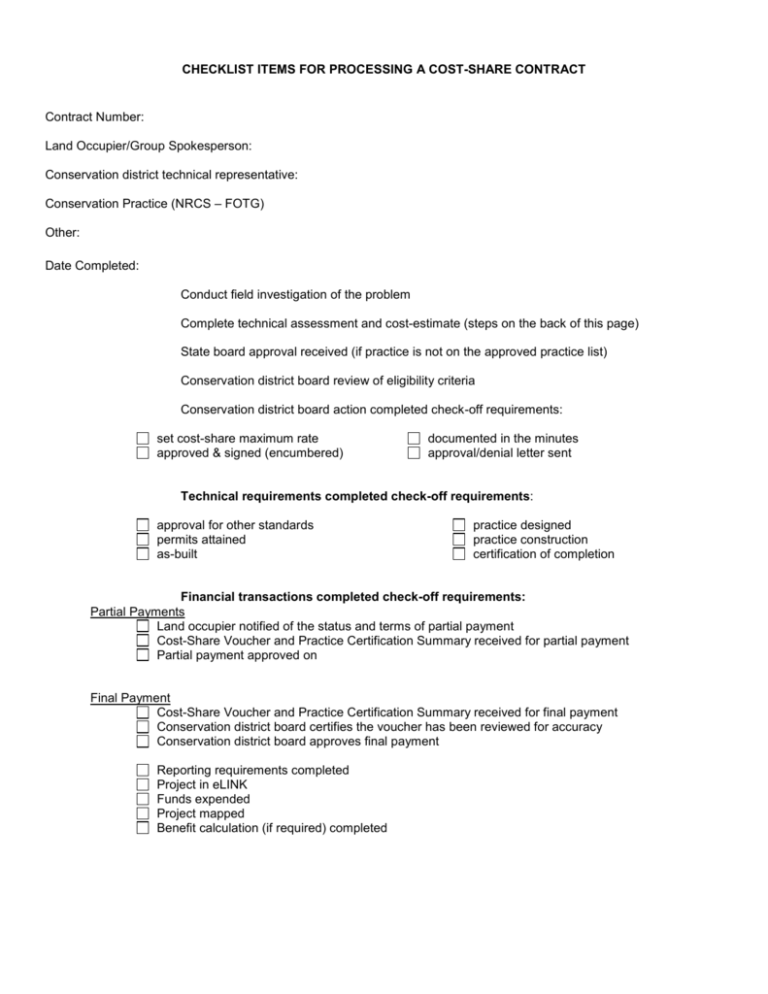
CHECKLIST ITEMS FOR PROCESSING A COST-SHARE CONTRACT Contract Number: Land Occupier/Group Spokesperson: Conservation district technical representative: Conservation Practice (NRCS – FOTG) Other: Date Completed: Conduct field investigation of the problem Complete technical assessment and cost-estimate (steps on the back of this page) State board approval received (if practice is not on the approved practice list) Conservation district board review of eligibility criteria Conservation district board action completed check-off requirements: set cost-share maximum rate approved & signed (encumbered) documented in the minutes approval/denial letter sent Technical requirements completed check-off requirements: approval for other standards permits attained as-built practice designed practice construction certification of completion Financial transactions completed check-off requirements: Partial Payments Land occupier notified of the status and terms of partial payment Cost-Share Voucher and Practice Certification Summary received for partial payment Partial payment approved on Final Payment Cost-Share Voucher and Practice Certification Summary received for final payment Conservation district board certifies the voucher has been reviewed for accuracy Conservation district board approves final payment Reporting requirements completed Project in eLINK Funds expended Project mapped Benefit calculation (if required) completed TECHNICAL ASSESSMENT 1. The problem does does not meet the high priority erosion water quality definition. Explain: 2. Conservation practices that will effectively treat the problem: Alternatives: Recommendation: 3. Potential impacts caused by the construction of the conservation practice: Cultural resources (including historical): Threatened or endangered species: Wetlands: Other: 4. No No No No Yes (please explain) Yes (please explain) Yes (please explain) Yes (please explain) Watershed treatment assessment: percent of the contributing watershed acres controlled by the land occupier has the needed cultural, management, or structural practices in place, or scheduled to be installed to stabilize sources of damaging sediment and surface water runoff. Runoff from the contributing watershed (including land not controlled by the land occupier) will will not the practice from achieving its intended purpose with normal operation and maintenance of the practice. Notes: prevent
